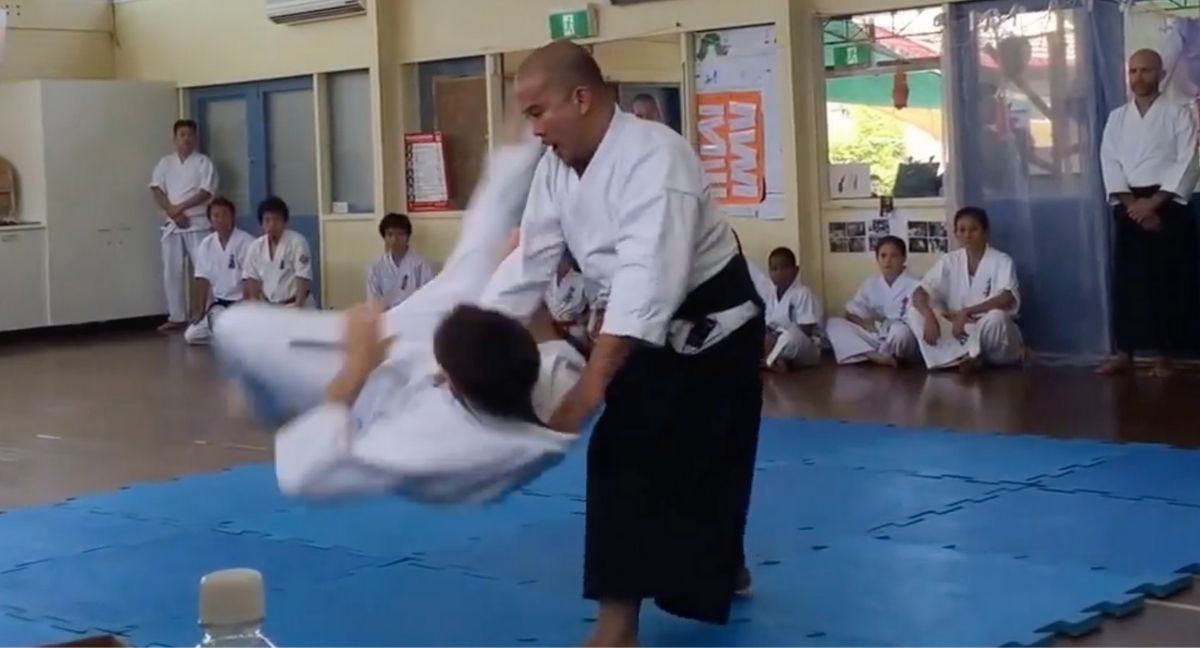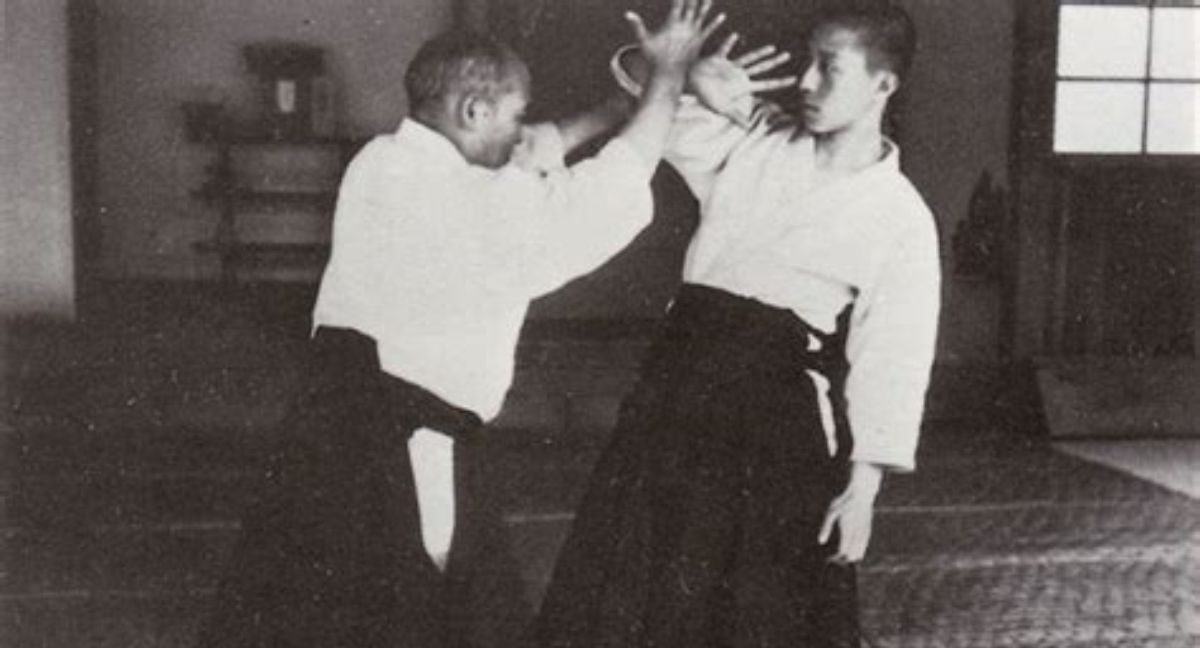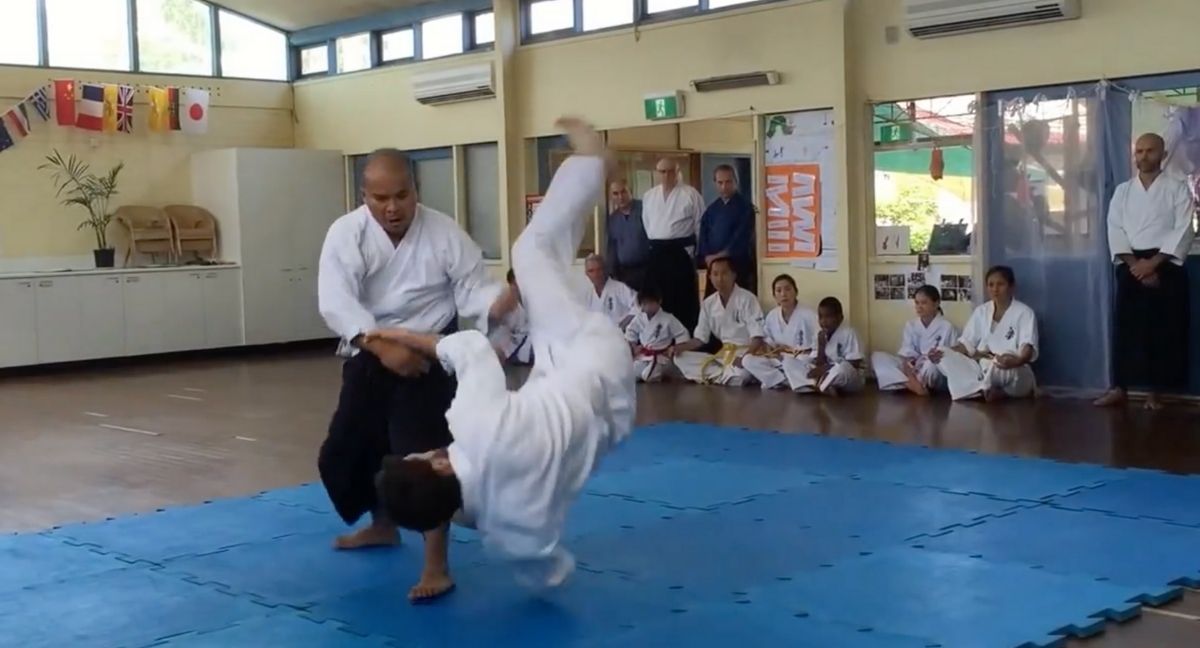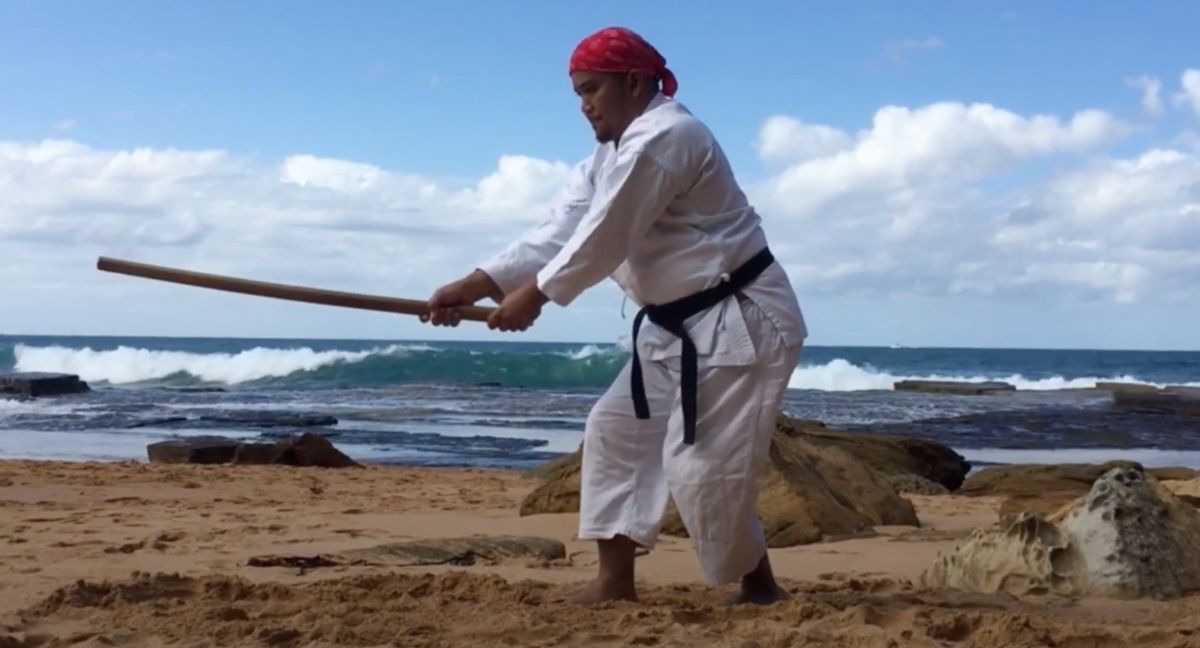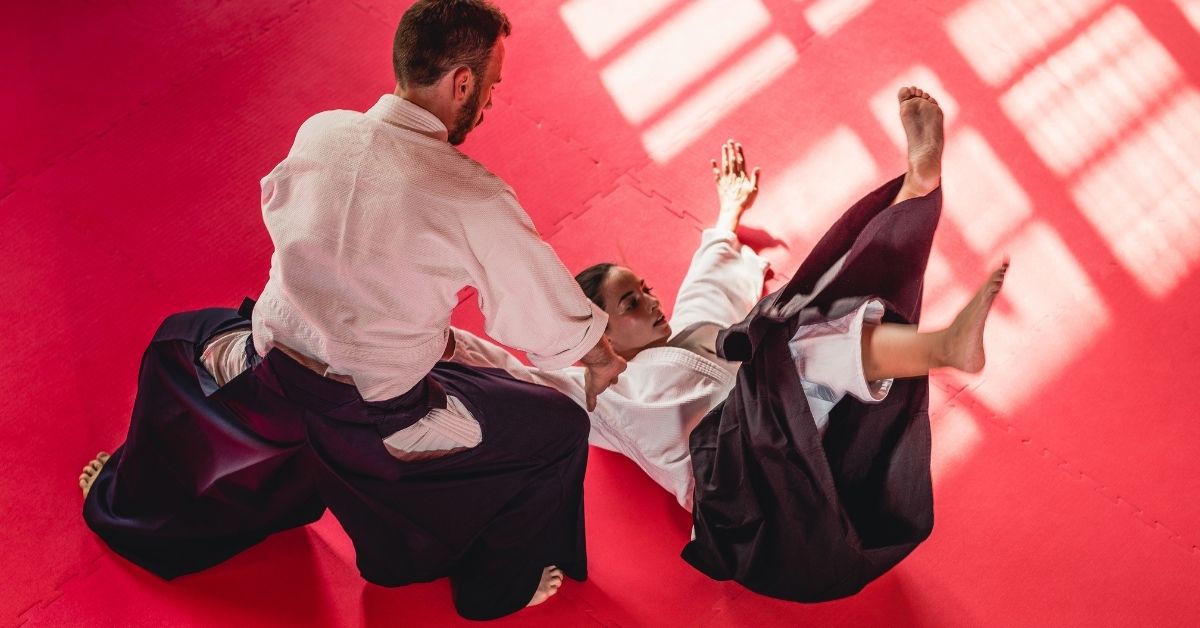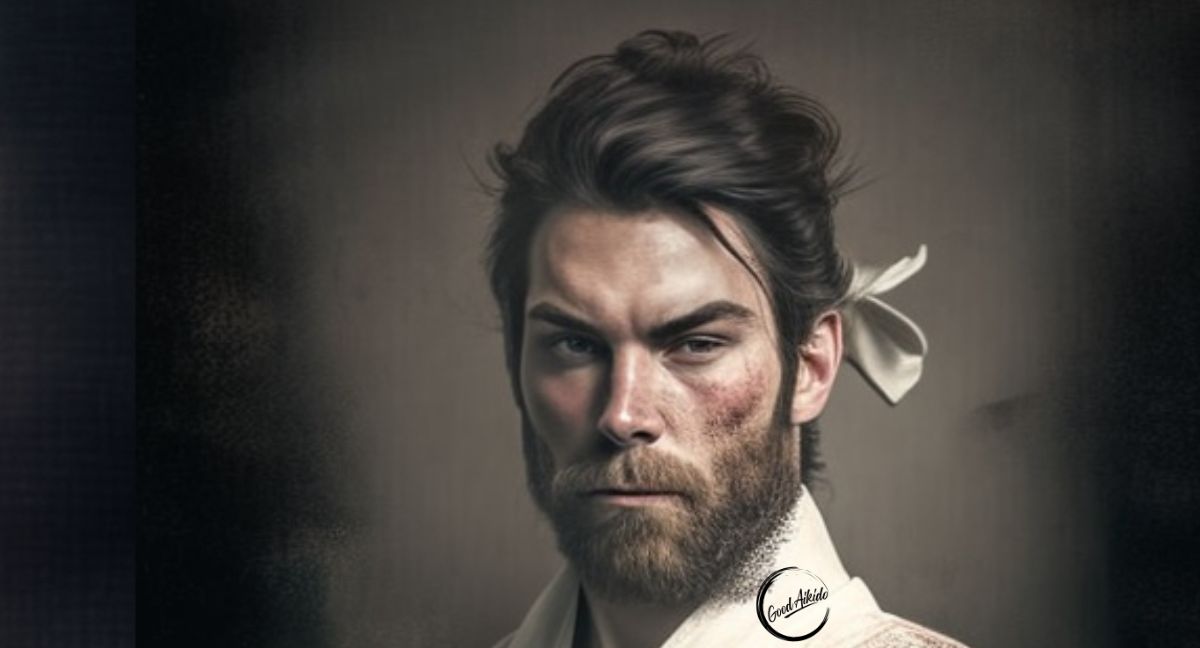The Ultimate Hakama Guide For Aikido
Aikido is a Japanese martial art that emphasises the use of an opponent’s energy against them, rather than using brute strength. Aikido practitioners wear a traditional Japanese garment called a hakama as part of their training uniform. There are several reasons why Aikido practitioners wear a hakama, including tradition, practicality, and symbolism.
Traditionally, hakama were worn by samurai and other members of the nobility in Japan. Aikido, which was developed in the early 20th century, was heavily influenced by traditional Japanese martial arts. Wearing a hakama is a way for Aikido practitioners to honour the history and tradition of the martial art.
In terms of practicality, hakama are designed to be worn during physical activity. They are made of heavy cotton or wool and have wide legs, which makes them suitable for movement and allows for a full range of motion. The hakama also has a divided back which allows for comfortable movement and practice. The hakama is also designed to be worn over traditional Japanese clothing such as the kimono, which makes it easy to put on and take off.
Symbolically, the hakama represents the separation of the physical and spiritual aspects of Aikido training. The hakama is worn over the traditional Japanese clothing, which represents the physical self. The hakama represents the spiritual self, and the act of putting on the hakama is a reminder to practitioners to separate the physical and spiritual aspects of their training.
In addition, the hakama has seven deep pleats, which symbolise the seven virtues of Bushido, the samurai code of conduct. These virtues include rectitude, courage, benevolence, respect, honesty, honour, and loyalty. Wearing the hakama reminds practitioners to embody these virtues in their training and daily lives.
Additionally, the hakama also serves as a symbol of rank and achievement in Aikido. The colour of the hakama worn by practitioners can indicate their rank or level of proficiency in the art. White hakama are typically worn by beginners, while black hakama is worn by more advanced practitioners.
In conclusion, Aikido practitioners wear hakama for a variety of reasons, including tradition, practicality, and symbolism. The hakama represents the separation of the physical and spiritual aspects of Aikido training and serves as a reminder to practitioners to embody the virtues of Bushido and to separate the physical and spiritual aspects of their training. The hakama is also worn as a symbol of rank and achievement in Aikido. Overall, the hakama is an important part of the Aikido uniform that serves both a practical and symbolic purpose.
What are the Different Types?
There are several different types of hakama, each with its own specific use and purpose.
Umanori Hakama
This type of hakama is typically worn by Aikido practitioners. It is characterised by its wide legs and divided back, which allows for comfortable movement and practice.
Andon Hakama
This hakama is typically worn by practitioners of Kendo, Iaido and Jodo. It is characterised by its narrow legs and a single back panel, which is typically worn with a Kendo-gi or Iaido-gi.
Kaze-obi hakama
The Kaze-obi hakama is worn by practitioners of traditional Japanese arts such as Koryu Bujutsu, iaido and kenjutsu. It is characterised by its wide legs, divided back and the tie that holds the hakama in place.
Shirabyōshi Hakama
This is the ‘feminine’ hakama is worn by female practitioners of traditional Japanese arts such as Noh, Kabuki and Buyō. It is characterised by its long, flowing train, which is typically worn with a kimono.
Keiko Hakama
This type of hakama is worn by practitioners of Kendo and Iaido for training. It is characterised by its simple and basic design, with no pleats and a single back panel. Oh for this one, get a tough one made of thicker cotton or canvas. I’ve seen many hakama get ripped during Keiko.
It is worth noting that the type of hakama worn may also vary depending on the school or organisation where the practitioner trains. Some dojos may have specific requirements regarding the type of hakama worn.
What are the rules for Shodokan (Tomiki) Aikido and Yoshinkan Aikido in wearing a hakama?
Shodokan Tomiki Aikido and Yoshinkan Aikido are two different styles of Aikido, and as such, may have different rules and guidelines for wearing a hakama.
Shodokan Tomiki Aikido
Shodokan Tomiki Aikido is a style of Aikido that emphasises the sport and competition aspect of the art, and as such, practitioners are typically expected to wear a hakama during training and competition. The hakama worn in Shodokan Tomiki Aikido is typically the umanori style, with wide legs and a divided back, which allows for comfortable movement and practice.
Yoshinkan Aikido
Yoshinkan Aikido is a style of Aikido that emphasises the traditional aspect of the art, and as such, practitioners are typically expected to wear a hakama during training and testing. The hakama worn in Yoshinkan Aikido is typically the umanori style, with wide legs and a divided back, which allows for comfortable movement and practice.
It is worth noting that the rules and guidelines for wearing a hakama may vary depending on the dojo or organisation where the practitioner trains. Some dojos may have specific requirements regarding the type of hakama worn, or when it should be worn. It is always best to check with the instructor or dojo for specific guidelines.
In both styles, the hakama is considered part of the traditional uniform and as such is expected to be worn during formal training, testing and gradings, and on other formal occasions such as demonstrations and seminars. It is also considered as a symbol of respect and humility towards tradition and art. As a general rule, it is expected for students to wear hakama after reaching a certain level of proficiency and experience, usually after the first black belt level.
How Men and Women Have Different Rules
In Aikido, there may be different rules or guidelines for men and women when it comes to wearing a hakama.
In some dojos or organisations, men may be required to wear a hakama during all training and formal occasions, while women may only be expected to wear a hakama on certain occasions or after reaching a certain rank or level of proficiency. This can be due to cultural or traditional reasons, as the hakama is traditionally worn by men in Japan.
In other dojos or organisations, there may be no difference in the rules for men and women when it comes to wearing a hakama. Both genders may be expected to wear a hakama during all training and formal occasions, regardless of rank or proficiency level.
It’s worth noting that the rules and guidelines for wearing a hakama may vary depending on the specific dojo or organisation one trains with. It’s always best to check with the instructor or dojo for specific guidelines. The most important thing is to respect the tradition and culture of Aikido and the dojo.
It’s worth noting that some dojos or organisations may have a more gender-equal approach to the wearing of hakama, where there is no difference in the rules for men and women and both are expected to wear the hakama with the same frequency and at the same level.
It’s always best to check with the instructor or dojo for specific guidelines and to be respectful of the tradition and culture of Aikido and the dojo.
How to Wear and Tie a Hakama for Aikido
- Put on your Aikido gi, which is a traditional martial arts uniform.
- Fold the hakama in half, lengthwise, so that the back and front pleats are aligned.
- Place the hakama on the ground, with the folded edge facing away from you.
- Step into the hakama, positioning the middle of the hakama (where the fold is) at the centre of your back.
- Bring the hakama up to your waist, making sure the front and back pleats are aligned and the hakama is evenly distributed around your waist.
- Take the right side and bring it over your right shoulder, making sure it is centred at the back.
- Take the left side and bring it over your left shoulder, making sure it is centred at the back.
- Take the front of the hakama and bring it up between your legs, making sure it is centred at the front.
- Take the back of the hakama and bring it up between your legs, making sure it is centred at the back.
- Tie the hakama cord around your waist, making sure it is snug but not too tight.
- Make sure that the hakama is properly adjusted and straightened out, with all the pleats aligned and the hakama sitting at your waist.
It’s important to note that the specific way of wearing the hakama may vary depending on the dojo or organisation one trains with. It’s always best to check with the instructor or dojo for specific guidelines and to be respectful of the tradition and culture of Aikido and the dojo.
What Are The Different Colours?
In Aikido, the colour of the hakama can indicate the wearer’s rank or level of proficiency. The most common colours are white, black, and brown, but other colours such as blue, grey, or green may also be used.
White hakama is usually worn by beginners and lower-ranked practitioners, as well as by students who are testing for their next rank. Black hakama is typically worn by higher-ranked practitioners, such as instructors, and brown hakama is worn by advanced practitioners who have achieved a high level of proficiency. The irony is O Sensei wore a white hakama during the war (WWII) because it was believed to be cheaper and more available.
In some dojos or organisations, the colour of the hakama may be determined by the individual’s specific rank or the rank system used by the organisation. For example, in some dojos, only students who have achieved the rank of shodan (first-degree black belt) or higher are allowed to wear a black hakama.
At one point indigo coloured Hakama was the most priced in Japan, just because it the indigo pigment was rare.
It’s worth noting that the specific rules and guidelines for the colour of the hakama may vary depending on the dojo or organisation one trains with. It’s always best to check with the instructor or dojo for specific guidelines and to be respectful of the tradition and culture of Aikido and the dojo.
What is the Proper Length for Aikido?
In Aikido, the proper length for a hakama is typically around the ankles. The length of the hakama should be long enough to cover the legs and feet, but not so long that it drags on the ground.
The hakama should sit at the waist, with the top of the hakama sitting just above the hipbones. The back of the hakama should be slightly longer than the front, with the back of the hakama covering the heel of the foot when standing.
It’s important to note that the specific guidelines for the length of the hakama may vary depending on the dojo or organisation one trains with. It’s always best to check with the instructor or dojo for specific guidelines and to be respectful of the tradition and culture of Aikido and the dojo.
Additionally, it’s important to make sure the hakama fits properly, as a hakama that is too long or too short can be uncomfortable and affect the wearer’s ability to perform Aikido techniques properly. It’s better to buy a hakama that fits you well rather than trying to adjust a hakama that is too long or short.
Why did Dr Kano Remove It in Judo?
Dr Jigoro Kano, the founder of Judo, removed the hakama from the traditional Judo uniform for practical and symbolic reasons.
Firstly, Kano believed that the hakama hindered the movement of the legs, making it difficult for practitioners to perform certain techniques properly. He felt that the hakama also added unnecessary weight to the uniform, making it less comfortable to wear and move in.
Secondly, Kano wanted to distance Judo from its feudal past. The hakama was traditionally worn by the samurai class and Kano believed that by removing it, Judo would be seen as more modern and accessible to a wider range of people. He also wanted to emphasise the practical, physical aspects of Judo rather than its historical and cultural roots.
Additionally, Dr Kano wanted to promote Judo as a sport and as a physical education method and felt that the traditional clothing worn by the samurai might not be appropriate for this purpose.
It’s worth noting that while hakama is not worn in traditional Judo practice, some organisations or individuals may choose to wear it in demonstrations or competitions. However, it’s not mandatory clothing and it’s not worn in official Judo competitions.
Why did O Sensei keep It in Aikido?
O Sensei, the founder of Aikido, kept the hakama in the traditional Aikido uniform for several reasons.
Firstly, O Sensei believed that the hakama was an important part of the traditional Japanese martial arts attire and that it helped to maintain the cultural and historical roots of Aikido. He felt that the hakama was a symbol of respect and humility and that it helped to create a sense of unity and tradition among Aikido practitioners.
Secondly, O Sensei believed that the hakama had practical benefits for Aikido training. The hakama can provide a sense of balance, and can also help to protect the legs and feet during training. It’s also believed that the hakama can help to conceal the practitioner’s movements, making it more difficult for an opponent to predict their next move.
Additionally, O Sensei believed that the hakama helped to create a sense of formality and respect in the dojo and that it helped to create a sense of discipline and focus among practitioners.
It’s worth noting that some contemporary Aikido organisations have modified the traditional uniform and don’t require the hakama to be worn, however, it’s still common in many dojos to wear hakama as it’s considered a part of the traditional Aikido attire and culture.
Do Practitioners of Karate Ever Wear It?
Traditionally, practitioners of Karate, do not wear a hakama. Most likely, it is because karate came from Okinawa.
The traditional Karate uniform, or “gi”, consists of a white cotton jacket and pants, and a belt. The hakama, on the other hand, is a long, pleated skirt-like garment that is typically worn with a traditional Japanese martial art such as Kendo or Aikido.
However, some Karate practitioners may choose to wear a hakama for personal reasons, such as for cultural or aesthetic reasons, or to show respect for the traditional roots of Karate. In addition, some Karate organizations or schools may include the use of hakama in their curriculum.
It’s worth noting that there are some styles of Karate that have been influenced by other martial arts, such as Goju-Ryu and Shito-Ryu which have incorporated the use of hakama in their practice.
In general, the use of hakama in karate is not a common practice and it’s not a part of the standard karate uniform.
n, widthways, bringing the left edge over to the right edge.
Fold the hakama in half one more time, widthways, bringing the left edge over to the right edge.
Your hakama is now folded into a neat square and ready to be stored.
It may take a few attempts to get the hang of folding the hakama properly, but with practice, it will become easier and more efficient. It’s important to be gentle when folding the hakama, to avoid damaging the fabric or the pleats.
How to fold and Tie a Hakama after Aikido Keiko
Folding and tying a hakama after Aikido Keiko can take some practice, but with a bit of patience and attention to detail, it can be done. Here is a step-by-step process for folding and tying a hakama:
- Start by laying the hakama flat on a clean, smooth surface. Make sure it’s free from wrinkles and creases.
- Fold it in half lengthways, bringing the bottom edge up to the top edge.
- Fold it in half again, widthways, bringing the left edge over to the right edge.
- Fold it in half again, widthways, bringing the left edge over to the right edge.
- Fold it in half one more time, widthways, bringing the left edge over to the right edge.
- Fold it in half one more time, widthways, bringing the left edge over to the right edge, which will result in a square shape.
- Make sure the edges are aligned with each other and smooth out any wrinkles or creases.
- Fold it in half, lengthways, bringing the bottom edge up to the top edge.
- Fold it in half again, widthways, bringing the left edge over to the right edge.
- Fold it in half one more time, widthways, bringing the left edge over to the right edge.
- Now that the hakama is folded into a neat square, you can tie it with the two himo (ties) that are attached to the waistband.
- Take the two himo and cross them over at the front of the hakama.
- Take the right himo over the left and tie it in a simple knot at the back of the hakama.
It is now folded and tied, ready to be stored.
It may take a few attempts to get the hang of folding and tying it properly, but with practice, it will become easier and more efficient. It’s important to be gentle when folding and tying the hakama, to avoid damaging the fabric or the pleats.
How to Look After Your Hakama
Here are some tips on how to look after your hakama:
Cleaning: It’s important to keep your hakama clean as dirt and sweat can damage the fabric and cause it to lose its shape. After each use, it is recommended to hang the hakama outside to air out before storing it. If it’s particularly dirty, it can be washed by hand or by machine using a gentle cycle and mild detergent. Avoid using bleach or fabric softeners as they can damage the fabric.
Storing: Proper storage is essential to maintaining the shape of your hakama. It should be folded and stored in a cool, dry place, preferably in a hakama bag. Avoid storing in damp or humid areas as this can cause mould and mildew to form.
Ironing: A hakama should be ironed after washing and before storing. It is important to iron on a low heat setting and to use a damp cloth to prevent scorching.
Himo: The himo, or cords, that tie the hakama should be checked regularly for wear and tear. They should be replaced if they become frayed or stretched.
Repairs: If your hakama becomes damaged, it is important to have it repaired as soon as possible. Rips, tears, and holes should be mended immediately to prevent further damage.
By following these tips and taking proper care of your hakama, it will last for many years and be a cherished part of your martial arts journey. It’s important to remember that a hakama is not just an item of clothing, but an important symbol of the martial arts tradition and should be treated with respect and care.
Aikido Studies:
Click here to Learn Japanese Aikido Words Used in the Dojo
Like us and Subscribe To our Facebook Page I Love Good Aikido to see the latest Posts.
Subscribe To My Newsletter
BE NOTIFIED ABOUT BOOK SIGNING TOUR DATES
Donec fringilla nunc eu turpis dignissim, at euismod sapien tincidunt.


